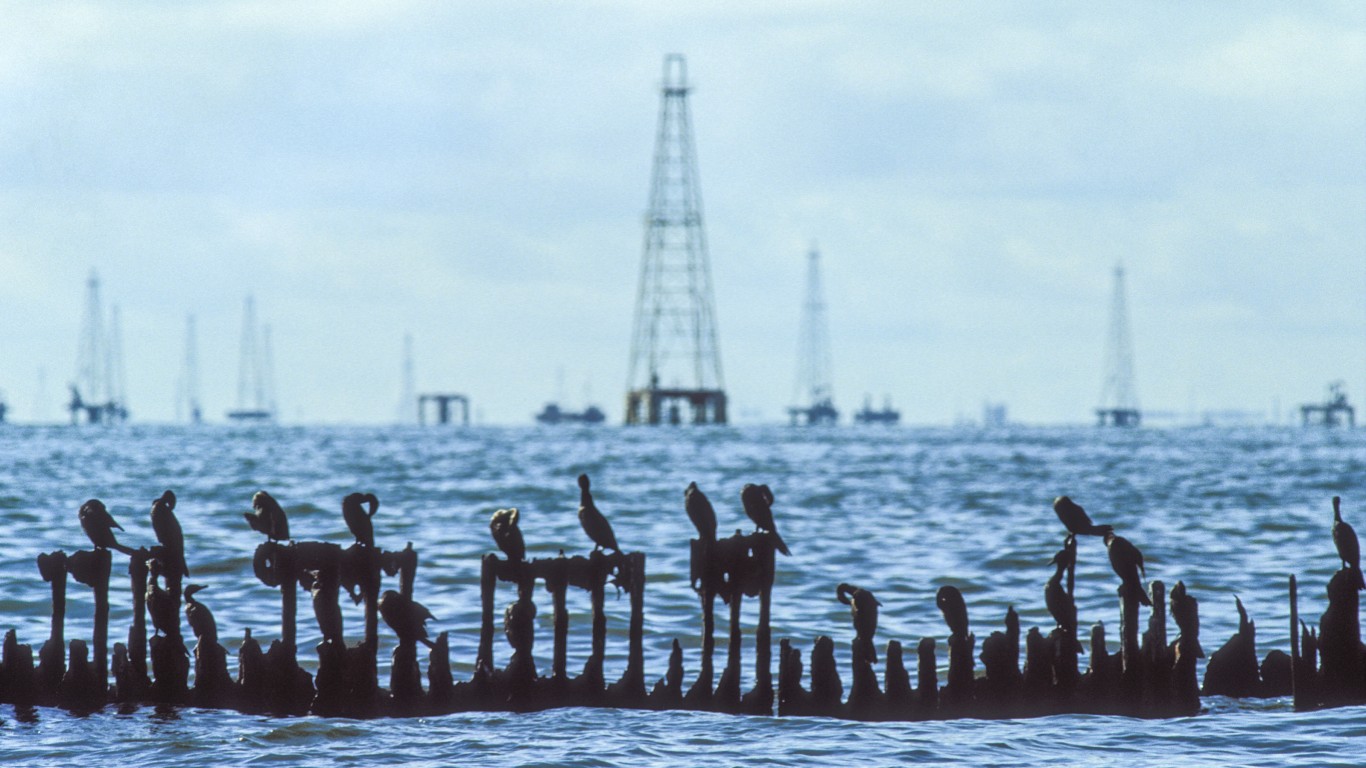
27. Venezuela
> Catastrophic ecological threats: Two: Food Security; Water Risk
> Global peace index, 2022 (1-5, most to least peaceful): 2.284 – #148 of 163 countries
> GDP per capita, 2014: $16,056 – #44 highest of 163 countries
> Human development index: 0.7 – #120 of 191 countries
> Population, July 2021 to 2050: 28.2 million to 35.9 million – 27.4% growth
Escaping violence, diminishing food security, and lack of health care, 6 million Venezuelans have fled their country to neighboring nations in Latin America and the Caribbean, according to the UNHCR, the U.N. Refugee agency. Many are coming to the U.S. In September, U.S. Customs and Border Protection reported 77,302 refugees were from Venezuela, Nicaragua, and Cuba, up 245% from a year ago. In addition, Venezuela is the only South American country projected to face increased water risk by 2040. It is also the country with the highest GDP per capita on the list.
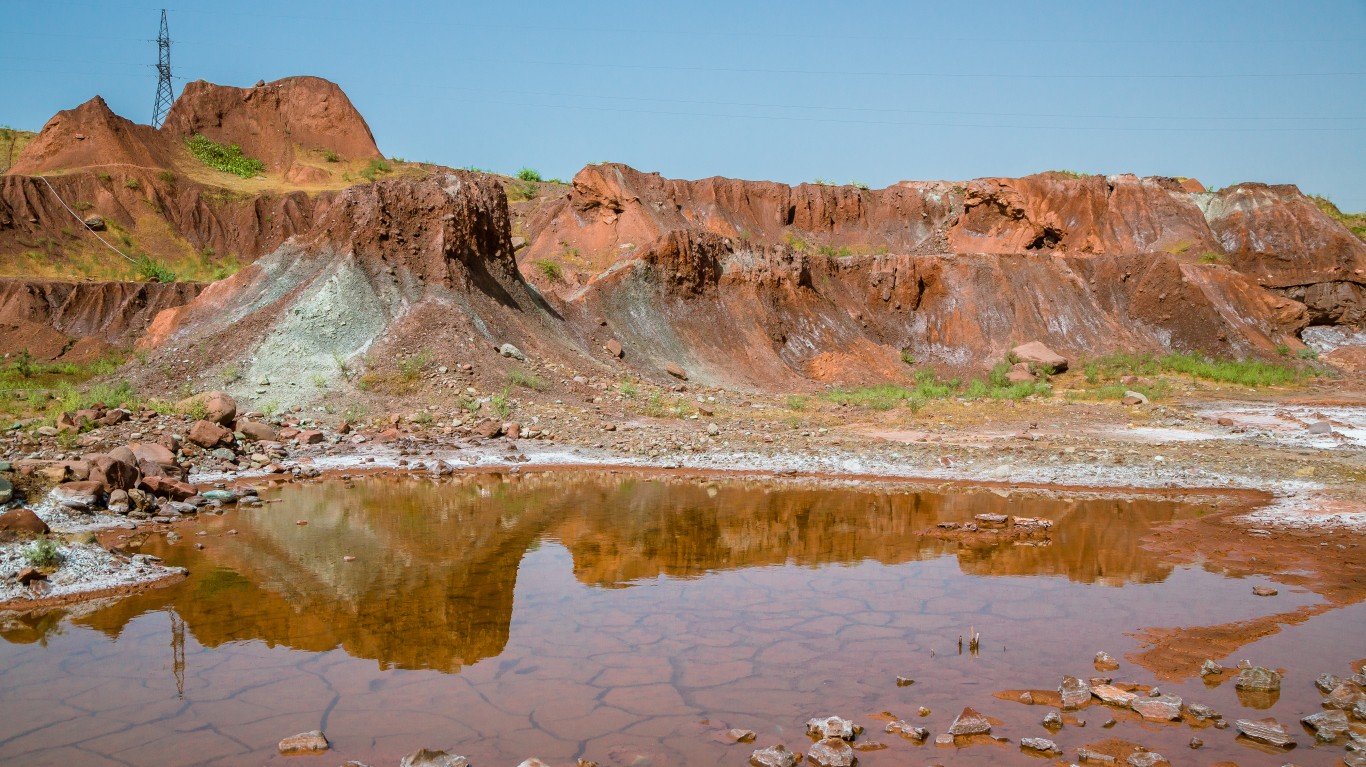
26. Tajikistan
> Catastrophic ecological threats: Two: Population; Water Risk
> Global peace index, 2022 (1-5, most to least peaceful): 2.177 – #92 of 163 countries
> GDP per capita, 2021: $897 – #20 lowest of 163 countries
> Human development index: 0.7 – #122 of 191 countries
> Population, July 2021 to 2050: 9.8 million to 15.2 million – 55.9% growth
Food insecurity plagues Tajikistan. The central Asian country bordering Afghanistan has the highest conflict risk to its food Imports. About 44% of the food the country imports is from low peace countries. Meanwhile, the country, which ranks among the poorest in the world, had among the highest increases in the number of natural disasters since 1981.
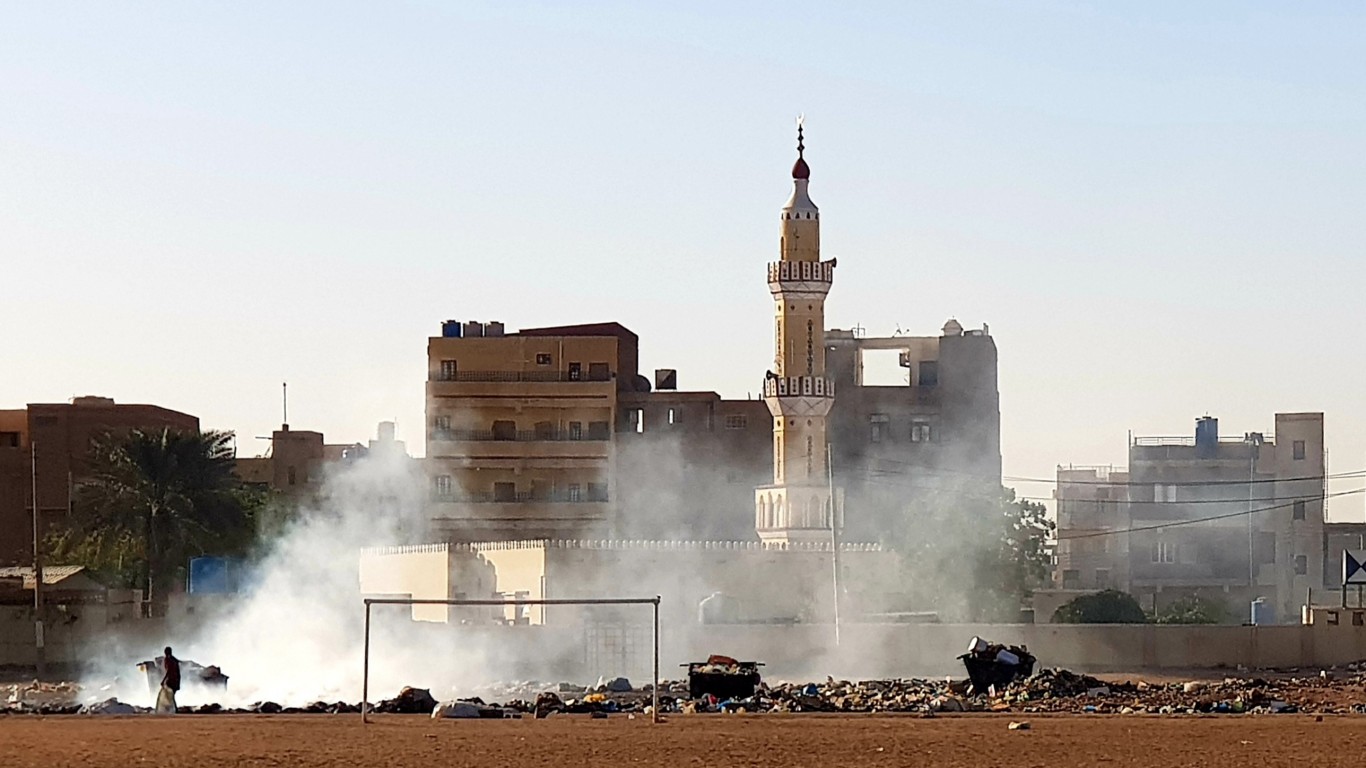
25. Sudan
> Catastrophic ecological threats: Two: Population; Water Risk
> Global peace index, 2022 (1-5, most to least peaceful): 3.117 – #154 of 163 countries
> GDP per capita, 2021: $764 – #15 lowest of 163 countries
> Human development index: 0.5 – #172 of 191 countries
> Population, July 2021 to 2050: 45.7 million to 84.5 million – 85.1% growth
The U.N. refugee agency warned in October of an ongoing crisis in Sudan after the fourth consecutive year of record-breaking rainfall and flooding. The agency estimates the disasters have affected 900,000 people as the flood waters destroyed homes and killed livestock. One of the world’s poorest countries is also among the countries that had water conflicts from 2000 to 2019, and such conflicts are expected to continue. The report projects at least nine more for Sudan. The country already ranks 10th lowest in the peace index.
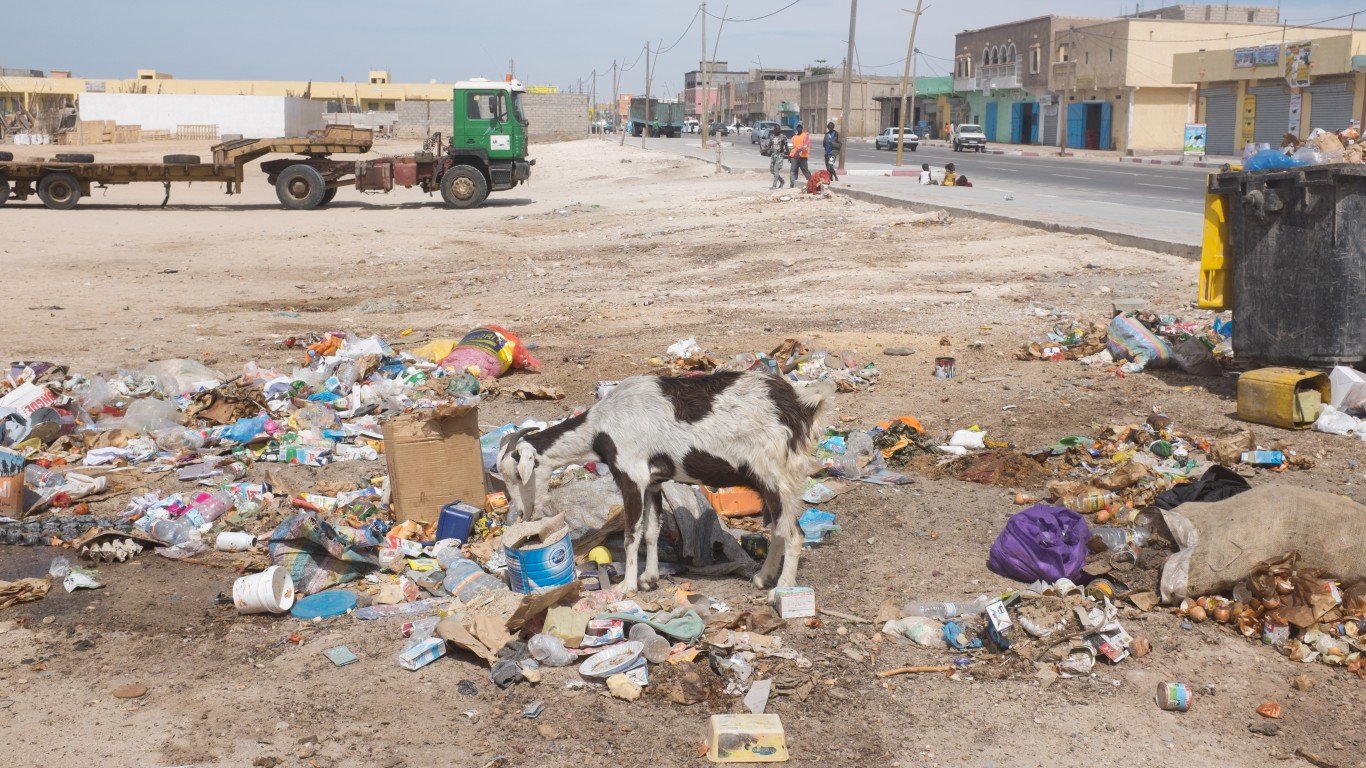
24. Mauritania
> Catastrophic ecological threats: Two: Population; Water Risk
> Global peace index, 2022 (1-5, most to least peaceful): 2.296 – #112 of 163 countries
> GDP per capita, 2021: $1,723 – #40 lowest of 163 countries
> Human development index: 0.6 – #158 of 191 countries
> Population, July 2021 to 2050: 4.6 million to 8.9 million – 93.2% growth
Mauritania’s water risk level is already high, but by 2040, its water challenges are projected to increase even more, the Ecological Threat Report predicts. Mauritania is one of 14 countries projected to face such a hazard over the next 18 years. Mauritania also faces food risk related to its reliance on imports from low peace countries.
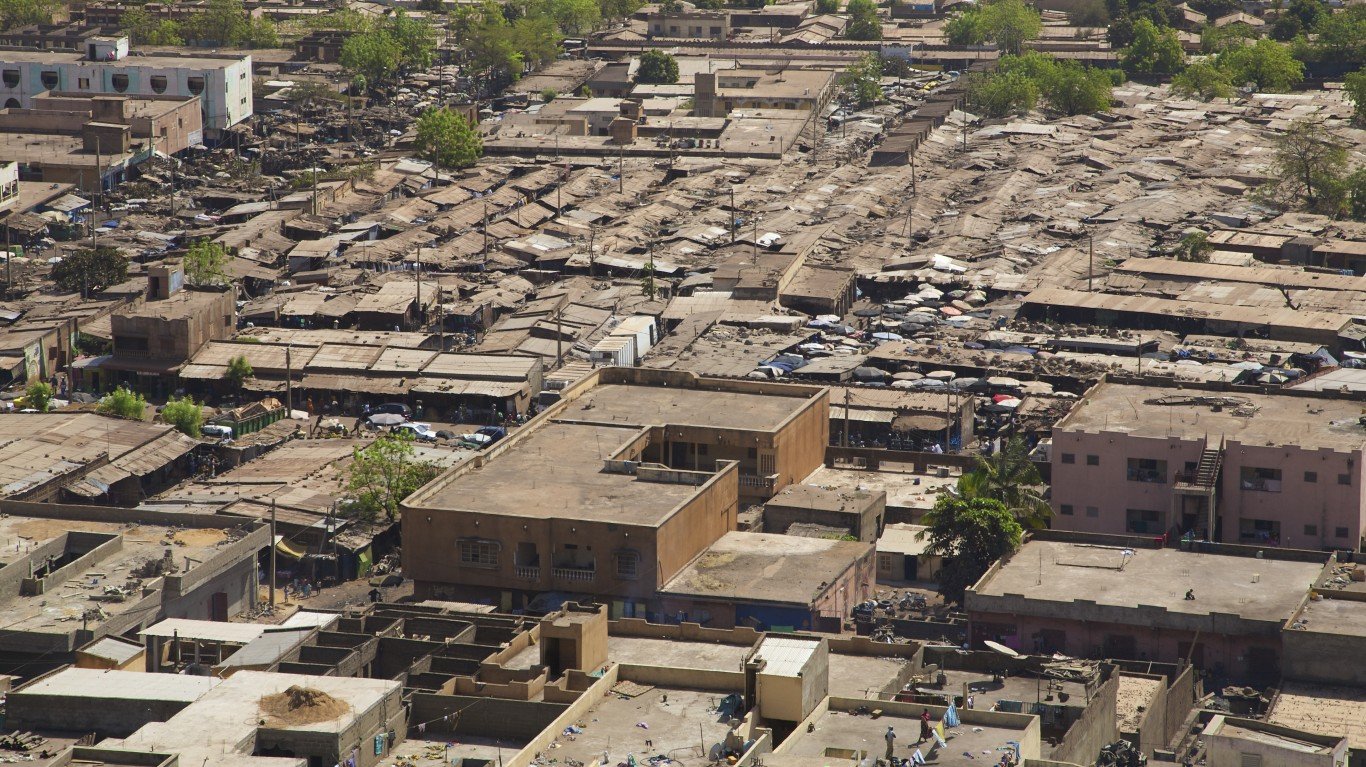
23. Mali
> Catastrophic ecological threats: Two: Population; Water Risk
> Global peace index, 2022 (1-5, most to least peaceful): 2.313 – #150 of 163 countries
> GDP per capita, 2021: $918 – #21 lowest of 163 countries
> Human development index: 0.4 – #186 of 191 countries
> Population, July 2021 to 2050: 21.9 million to 47.4 million – 116.6% growth
Human Rights Watch reported ethnic violence in central Mali has taken the lives of more than 800 civilians since 2015. In 2020, an ethnic militia killed 35 villagers in Ogossagou. The same village was the site of massacre of 150 people in 2019. Mali is one of 14 countries projected to face the most increased water stress over the next 18 years, which could create about three water conflicts. One of the world’s poorest and least developed countries is also expected to have one of the largest population growth, at more than double from 2020 to 2050.





